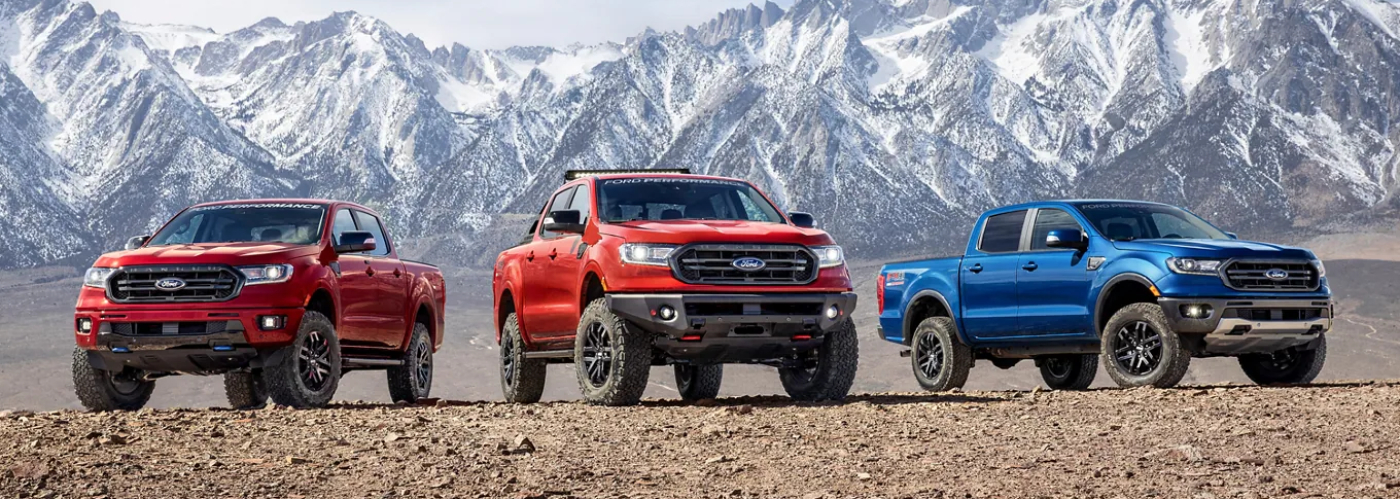The dichotomy between mid-size and full-size trucks often stirs fervent debate among enthusiasts and casual users alike. When pondering the Ford Ranger and the Ford F-150, one cannot help but consider a multitude of factors encompassing performance, payload capacity, fuel efficiency, and, crucially, environmental impact. The choice between these two trucks goes beyond mere specifications; it delves deeply into lifestyle preferences and priorities.
Firstly, let’s examine the primary archetypes of these two formidable machines. The Ford Ranger, a mid-size truck, boasts a compact design that is well-suited for urban maneuverability while retaining impressive capabilities. In contrast, the Ford F-150, as a full-size truck, embodies a robust presence on the road and offers power and size that appeal to a different clientele. This fundamental distinction sets the stage for understanding the complexities of their competition.
From a performance perspective, both trucks present compelling arguments for their respective merits. The Ranger typically features a smaller engine, which in turn translates to greater fuel efficiency—a paramount concern in today’s climate-conscious world. It is equipped with a turbocharged engine that can deliver an exhilarating driving experience without sacrificing fuel economy. On the other hand, the F-150 utilizes a variety of engine options, including powerful V8 configurations, which can handle heavier loads. However, this power often comes at the expense of efficiency, leading to a heavier carbon footprint that presents challenges for environmentally-aware consumers.
Payload capacity and towing capability are crucial metrics for anyone seeking a functional truck. The Ford F-150 is renowned for its ability to haul significant weights, making it a favorite among contractors, adventurers, and anyone needing serious towing prowess. With robust configurations that can tow upwards of 14,000 pounds, the F-150 caters to a highly demanding market. In contrast, the Ranger, while still quite capable, tops out at around 7,500 pounds of towing capacity—a respectable number for everyday tasks but predictably falls short of the F-150’s substantial capabilities.
Another striking component to consider is the interior space and cargo versatility. The F-150, being larger, offers expansive cabin configurations and ample cargo space. This full-size truck can cater to families and larger groups seamlessly, providing comfort alongside utility. The mid-size Ranger, while comfortable, necessarily sacrifices some interior space for its more compact frame, which may deter users who prioritize roominess. Moreover, the F-150’s array of technology and premium features positions it as not just a workhorse but a sophisticated driving experience enhancing connectivity and convenience.
Now, delving into aesthetics and design, Ford has successfully created two visually appealing models. The Ranger presents a rugged yet modern appearance that resonates well with outdoor enthusiasts and urban dwellers alike. Meanwhile, the F-150 flaunts a dominant, muscular exterior that embodies strength and capability, appealing to those who appreciate a commanding presence on the road. Notably, the aesthetic distinctions may have latent implications regarding lifestyle choices; a preference for one style over another can speak volumes about the user’s values and pursuits.
Additionally, the emergence of eco-consciousness has sparked discussions around sustainability within the automotive industry. As environmental regulations tighten and consumer awareness grows, the ecological footprint of vehicles becomes a pivotal factor. In this respect, the Ford Ranger, with its superior fuel efficiency, positions itself as the more sustainable option for individuals who may engage in moderate hauling and towing duties yet still champion environmental stewardship. Conversely, while the F-150 provides a diverse range of innovative engine options—such as the hybrid variant—the overall efficacy in reducing greenhouse gas emissions may not be as pronounced given its larger size and power demands.
Moreover, the operational costs must be taken into account. While the initial purchase price for a full-size truck may be higher, ongoing expenses, such as fuel, maintenance, and insurance, can accumulate over time, potentially tipping the scale in favor of a mid-size truck like the Ranger. For instance, the fuel tank variation affects range and refueling frequency—dimensions that matter significantly for daily drivers or those who commute with their vehicle regularly.
Moreover, the cultural significance of these trucks cannot be overlooked. The Ford F-150 has achieved a near-mythic status in American culture, often considered the quintessential truck for hard workers and adventurers alike. This storied legacy can heavily influence buyer decisions, creating a compelling narrative around ownership. In contrast, the Ranger appeals to a younger demographic that favors versatility, affordable performance, and modern features over sheer size.
Ultimately, the choice between the Ford Ranger and Ford F-150 is not merely about numbers; it encapsulates a broader exploration of lifestyle, responsibility, and community values. Mid-size trucks like the Ranger offer a more nuanced approach to tackling the challenges of driving in today’s world while maintaining a focus on efficiency and functionality. Conversely, full-size trucks like the F-150 provide unmatched power, space, and cultural significance—though they may necessitate a consideration of their environmental impact.
In summary, whether you gravitate towards the Ford Ranger or the Ford F-150, the decision hinges upon individual needs and priorities. Are you seeking efficiency and adept handling, or is strength and sheer capability your primary pursuit? In this age of climate awareness, perhaps the most significant consideration is how your choice aligns with the growing imperative toward sustainable living, reflecting not just personal preference, but a commitment to a more mindful future.
